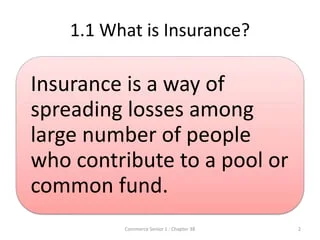10 Easy Facts About Pacific Prime Explained
10 Easy Facts About Pacific Prime Explained
Blog Article
Everything about Pacific Prime
Table of ContentsHow Pacific Prime can Save You Time, Stress, and Money.An Unbiased View of Pacific PrimeNot known Facts About Pacific PrimeSome Known Questions About Pacific Prime.The Definitive Guide for Pacific Prime

This is because the information were collected for a period of solid economic efficiency. Of the estimated 42 million individuals that were without insurance, all however about 420,000 (about 1 percent) were under 65 years old, the age at which most Americans become qualified for Medicare; 32 million were grownups between ages 18 and 65, around 19 percent of all adults in this age group; and 10 million were youngsters under 18 years old, about 13.9 percent of all children (Mills, 2000).
These quotes of the variety of individuals uninsured are generated from the yearly March Supplement to the Existing Populace Survey (CPS), carried out by the Demographics Bureau. Unless otherwise noted, national price quotes of people without medical insurance and proportions of the population with different type of insurance coverage are based upon the CPS, one of the most widely used source of estimates of insurance coverage and uninsurance prices.
About Pacific Prime

Still, the CPS is particularly beneficial since it generates yearly quotes relatively rapidly, reporting the previous year's insurance protection approximates each September, and because it is the basis for a consistent collection of quotes for greater than 20 years, enabling evaluation of patterns in coverage over time. For these reasons, along with the substantial use of the CPS in various other researches of insurance coverage that exist in this record, we rely upon CPS quotes, with limitations kept in mind.

The estimate of the variety of uninsured people increases when a population's insurance coverage status is tracked for numerous years. Over a three-year duration beginning early in 1993, 72 million people, 29 percent of the united state populace, lacked protection for at the very least one month. Within a single year (1994 ), 53 million people experienced at least a month without coverage (Bennefield, 1998a)
6 out of every 10 without insurance grownups are themselves used. Functioning does improve the chance that one and one's family participants will have insurance, it is not a warranty. Also members of family members with two permanent wage earners have almost a one-in-ten opportunity of being uninsured (9.1 percent without insurance rate) (Hoffman and Pohl, 2000).
A Biased View of Pacific Prime
New immigrants account for a substantial percentage of people without medical insurance. One evaluation has attributed a substantial portion of the recent growth in the dimension of the united state without insurance populace to immigrants that arrived in the country between 1994 and 1998 (Camarota and Edwards, 2000). Recent immigrants (those who involved the USA within the previous 4 years) do have a high price of being without insurance (46 percent), but they and their youngsters make up just 6 percent of those without insurance country wide (Holahan et al., 2001).
The connection in between medical insurance and access to care is well developed, as recorded later in this chapter. The relationship between health insurance policy and health and wellness outcomes is neither straight neither easy, a substantial medical and health solutions research study literature web links health and wellness insurance coverage to better accessibility to care, much better high quality, and improved personal and population health status.
Levels of analysis for taking a look at the results of uninsurance. This discussion of medical insurance coverage focuses primarily on the united state populace under age 65 because essentially all Americans 65 and older have Medicare or various other public coverage. In addition, it focuses specifically on those with no medical insurance for any kind of length of time.
The Single Strategy To Use For Pacific Prime
The troubles encountered by the underinsured are in some areas similar to those encountered by the without insurance, although they are usually much less serious. Health insurance, however, is neither necessary neither adequate to acquire access to clinical solutions. The independent and direct effect of health insurance protection on accessibility to health and wellness services is well developed.
Others will certainly obtain the healthcare they require also without health insurance policy, by spending for it expense or seeking it from carriers who provide treatment complimentary or at highly subsidized prices. For still others, medical insurance alone does not ensure receipt of treatment because of various other nonfinancial obstacles, such as a lack of health and wellness treatment companies in their area, limited access to transportation, illiteracy, or linguistic and social distinctions.
Some Known Factual Statements About Pacific Prime
Formal research study concerning without insurance populations go to the website in the USA dates to the late 1920s and very early 1930s when the Board on the Price of Treatment produced a collection of records about financing doctor workplace gos to and hospitalizations. This problem ended up being salient as the varieties of medically indigent climbed during the Great Clinical depression.
Report this page